-
Paris attacks' mastermind had files on German nuclear waste facility
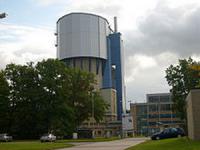
Salah Abdeslam, the mastermind of the November 2015 terrorist attacks who is now in custody in Belgium, had in his possession documents about a nuclear research center in Germany. The Juelich nuclear center near the Belgium-Germany border is used for the storage of nuclear waste.
-
-
How to protect nuclear plants from terrorists
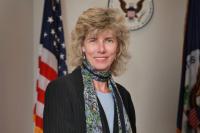
In the wake of terrorist attacks in Brussels, Paris, Istanbul, Ankara, and elsewhere, nations are rethinking many aspects of domestic security. Nuclear plants, as experts have long known, are potential targets for terrorists, either for sabotage or efforts to steal nuclear materials. At last month’s Nuclear Security Summit in Washington, D.C., representatives from fifty-two countries pledged to continue improving their nuclear security and adopted action plans to work together and through international agencies. But significant countries like Russia and Pakistan are not participating. And many in Europe are just beginning to consider physical security measures. To prevent an attack at a nuclear site, governments must take security at nuclear sites seriously now, not a year from now. In light of the current terrorist threat and with four Nuclear Security Summits completed, countries with nuclear plants need to up their game with regards to physical security at nuclear power facilities before it’s too late.
-
-
Digital mapping project tracks the last moments of the victims of Japan’s 2011 tsunami
Digital archives track the evacuation patterns of 2011 Great East Japan Earthquake victims between the time the earthquake and tsunami struck. The Tokyo Metropolitan University researchers who created the digital archives say they will make use of the archive to analyze evacuation behaviors — encouraging people, for instance, to avoid overestimating evacuation sites and head to higher ground.
-
-
New way to clean contaminated groundwater
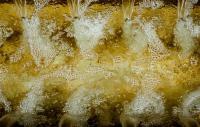
A team of researchers has helped discover a new chemical method to immobilize uranium in contaminated groundwater, which could lead to more precise and successful water remediation efforts at former nuclear sites. Uranium is present in contaminated groundwater at various sites in the United States as a legacy of Cold War-era processing and waste disposal activities associated with nuclear materials production.
-
-
What is a dirty bomb and how dangerous is it?
The worrying news that individuals affiliated with the so-called Islamic State have undertaken hostile surveillance at a Belgian nuclear research facility has created growing speculation about the group’s nuclear ambitions. There are no indications that a terrorist group has obtained any fissile material to date. An easier option for a terrorist group would be to build a dirty bomb or, technically, a radiological dispersal device. This is the reason for sensible concern, rather than hysterical speculation about Islamic State’s recent activities in Belgium and, especially, Iraq and Syria. After all, without an effective government, it is unclear who controls the many radioactive sources in the region.
-
-
Paper-based test to help prevent food poisoning
The foodborne bacteria Salmonella alone led to nearly 20,000 hospitalizations and almost 400 deaths in 2013. Economists estimate that the treatment of all these patients and the related productivity losses cost more than $3 billion annually. And those numbers account for just one of the fifteen pathogens responsible for most of the food poisoning cases. Scientists have developed a simple, paper-based test that could help detect pathogens hitchhiking on food before they reach store shelves, restaurants and, most importantly, our stomachs.
-
-
ISIS planning to use drones for radioactive attacks on Western cities
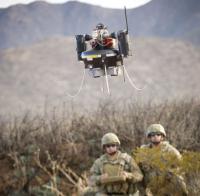
Prime Minister David Cameron warned that ISIS terrorists are planning to use drones to spray nuclear material over Western cities in a lethal “dirty bomb” attack. Security experts are worried about jihadists buying simple drones, which are widely available, and use them to carry radioactive material into the centers of large cities in attacks which would kill thousands and contaminate large sections of cities, making entire areas uninhabitable for years.
-
-
Is Belgium’s nuclear security up to scratch?
Belgium’s counter-terrorism efforts are once again being called into question following the recent tragedies in Brussels. The attacks were carried out against soft targets – the public check-in area of Brussels Airport and Maelbeek metro station – but a series of unusual and suspicious occurrences were also reported at nuclear facilities in the country. These events highlight the very real threat to nuclear facilities. For Belgium, this recent episode is one item on a long list of security concerns. Based on this history, the Belgian authorities should be primed to take nuclear security especially seriously. But there are serious questions about whether they are.
-
-
U.K. to ship highly enriched uranium for disposal in U.S.

The United Kingdom will ship large quantities of enriched uranium for disposal in the United States, and in return will receive nuclear material from the United States for use in the treatment of cancer patients in Europe. About 700kg of radioactive waste, most of which is held at Dounreay in northern Scotland, will be shipped to the United States to be treated in American nuclear disposal plants, which have a greater capacity than British plants to dispose of radioactive materials.
-
-
Brussels attackers originally planned to attack a nuclear facility: Belgian authorities
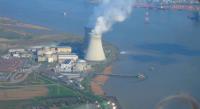
The terrorists who attacked the airport and a metro station on Tuesday had originally considered targeting a Belgian nuclear site, but that such an attack would have required more time and planning. The terrorists abandoned the nuclear facility attack plan after Belgian security services arrested a number of Islamist militants, forcing the terrorists to act more quickly and focus on soft targets instead of a hardened nuclear facility. EU counterterrorism coordinator said that Belgium’s network of nuclear power stations could become the targets of cyberattacks by terrorists in the near future. “And if [ISIS] ever did turn to nuclear weapons,” one experts says, “they have more people, more money and more territory under their control and more ability to recruit experts globally than Al Qaeda at its best ever had.”
-
-
Sandia Lab helps China launch nuclear security center
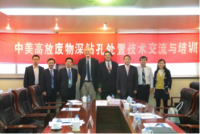
U.S. national labs and their Chinese counterparts have launched the Chinese Center of Excellence (COE) for nuclear security. The center will provide training for security personnel in China’s expanding nuclear power sector. Sandia notes that its experience in physical security grew out of decades of work securing high-consequence facilities against theft and sabotage.
-
-
Sniffing out a dangerous vapor for detecting fuel leaks, fuel-based explosives
Alkane fuel is a key ingredient in combustible material such as gasoline, airplane fuel, oil — even a homemade bomb. Yet it is difficult to detect and there are no portable scanners available that can sniff out the odorless and colorless vapor. Engineers have developed a new type of fiber material for a handheld scanner that can detect small traces of alkane fuel vapor, a valuable advancement that could be an early-warning signal for leaks in an oil pipeline, an airliner, or for locating a terrorist’s explosive.
-
-
Worries in Belgium over ISIS dirty-bomb plot

Belgian security authorities say that it appears that ISIS-linked terrorists in the country have been planning to build a dirty nuclear bomb for use in a future terrorist attack. Growing concerns over security at nuclear plants have led to the revocation of security passes of eleven workers. A senior Belgian nuclear official was also secretly monitored by individuals linked to the 13 November Paris attacks.
-
-
Benchmark data set validates global nuclear reactor codes
Nearly 100 commercial nuclear reactors supply one-fifth of America’s energy. For each fuel rod in a reactor assembly, only 5 percent of its energy is consumed before fission can no longer be sustained efficiently for power production and the fuel assembly must be replaced. Power plants currently store the used fuel on-site. Information on the composition of the used fuel is essential for the design of safe storage, transportation, and final repository facilities and for inspection and verification to safeguard nuclear materials. Improved accuracy in prediction of the spent fuel isotopic composition leads to increased efficiency in the facility designs and higher confidence in the safeguard protocols.
-
-
New fuel materials to make nuclear reactors safer
Nuclear power is an important energy source in the United States and around the world and is essential as a clean energy to reduce current carbon emissions from fossil fuels. However, many people feel the risk of nuclear accidents does not outweigh the benefits associated with nuclear energy. Scientists are exploring new materials for nuclear fuel, which could make current light water reactors (LWRs) safer.
-
More headlines
The long view
Keeping the Lights on with Nuclear Waste: Radiochemistry Transforms Nuclear Waste into Strategic Materials
By John Domol
How UNLV radiochemistry is pioneering the future of energy in the Southwest by salvaging strategic materials from nuclear dumps –and making it safe.
Model Predicts Long-Term Effects of Nuclear Waste on Underground Disposal Systems
By Zach Winn
The simulations matched results from an underground lab experiment in Switzerland, suggesting modeling could be used to validate the safety of nuclear disposal sites.
